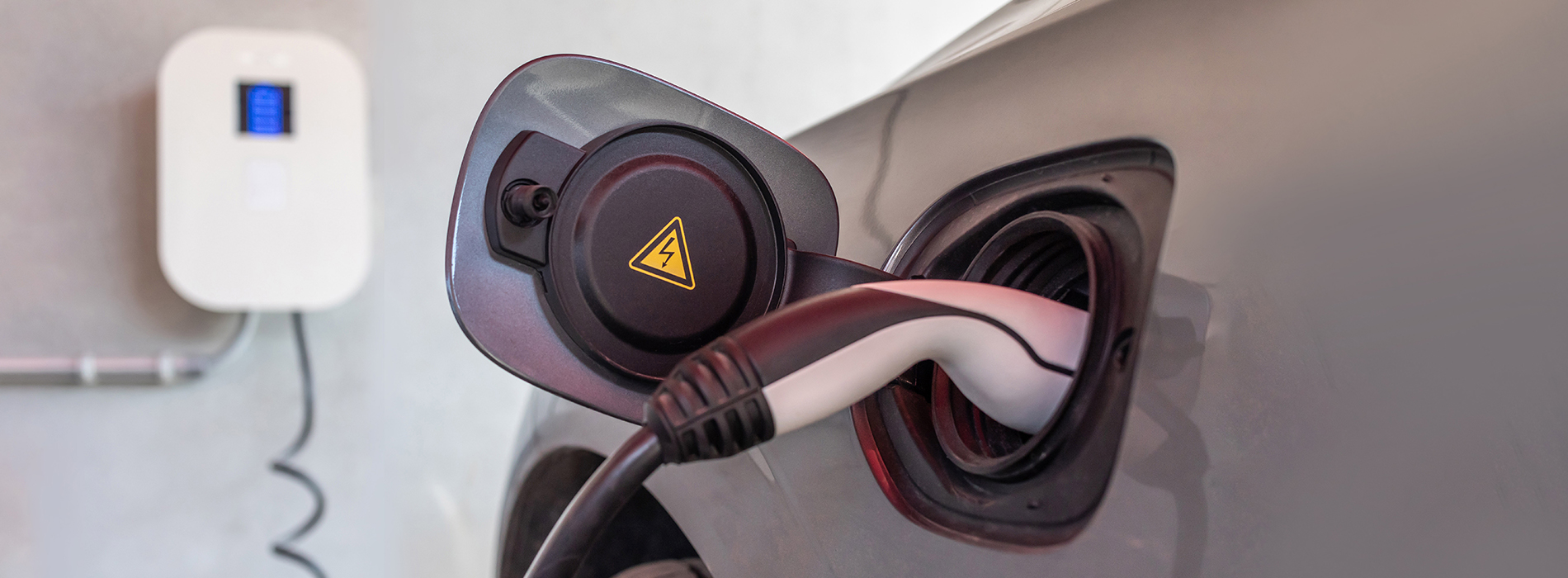
One of the conveniences of driving electric vehicles (EVs) is the ability for some drivers to “refuel” at home – something that is impracticable for gasoline-powered cars.
U.S. Department of Energy research and EV driver surveys in California, which has the nation’s highest percentage of zero-emission vehicles, show that most charging is currently done at home.
But to expand EV ownership beyond early adopters and homeowners, EV charging needs to be accessible to people who don’t have the option to charge at home. That means more chargers are needed at multifamily housing, workplaces and publicly available locations.
How is home charging being done?
About 86% of EV drivers surveyed who received a rebate through California’s Clean Vehicle Rebate Project (CVRP) said they charge at home. (See Home Charging Accessibility Trends Report.) Of those:
- 36% rely on a 120-volt outlet for home charging (a standard outlet that can be used for a toaster or hair dryer).
- 25% use a 240-volt outlet (similar in voltage to a clothes dryer or oven).
- 23% have a Level 2 charger.
Drivers of plug-in hybrid electric vehicles (with both gas and electric motors) more frequently rely on a 120-volt outlet, while all-electric vehicle drivers use 240-volt outlets or Level 2 chargers.
Barriers to charging at home
Of the nearly 14% of CVRP rebate recipients surveyed who said they lack access to home charging:
- 56% rent or have a homeowners association and are not authorized to make changes at their residence.
- 32% can charge free or at a lower cost somewhere else.
- 21% said adding an outlet or charging station would be too expensive.
- 15% said it would be too complicated.
Solutions to charging barriers
Incentives, educational tools and other resources can help break down barriers to home, workplace and public charging.
Help for those in multifamily housing: Resources are available to educate tenants, homeowners, homeowner association leaders and property managers and owners about installing chargers at apartments and condominiums. The U.S. Department of Energy-funded Vehicle Charging Innovations for Multi-Unit Dwellings (VCI-MUD) project pulls together guidance, best practices and roadmaps for advancing a charging project. It outlines strategies for residents to build support among other tenants and engage with their property owner or homeowners association to advocate for installing charging infrastructure.
Help for employers and workers: Support is also available for managers and employees exploring workplace charging projects. Workplacecharging.com, with examples of survey language and best practices, is a great place to start when planning how to support employees’ choice to commute in an electric car.
Help for publicly available charging: Federal investments in EV charging, including the National Electric Vehicle Infrastructure (NEVI) Program, are supporting the installation of EV chargers along major traffic corridors. In California, efforts that pre-date NEVI include the California Electric Vehicle Infrastructure Project (CALeVIP), administered by the Center for Sustainable Energy, which is for DC fast chargers, and Communities in Charge, administered by CALSTART, which offers rebates for Level 2 EV chargers where communities gather.
Help for homeowners: As the CVRP survey shows, even single-family homeowners can face barriers to home charging – finding the process expensive or complicated. To address the cost issue, especially in low-income and disadvantaged communities, some utilities are offering rebates to help income-qualifying homeowners upgrade their electrical panels to be able to handle the addition of EV charging. To address the learning curve, utilities and car dealerships can play a key role in providing information on how to install EV chargers and how much charging costs.
Expanded EV charging will support expanded EV ownership
With a steady stream of new EV models on the way and an emerging used EV market, more drivers should consider making their next car an EV. While barriers to adoption remain, rebates and incentives and informational resources can help expand access to charging and accelerate the transition to electrified transportation.


